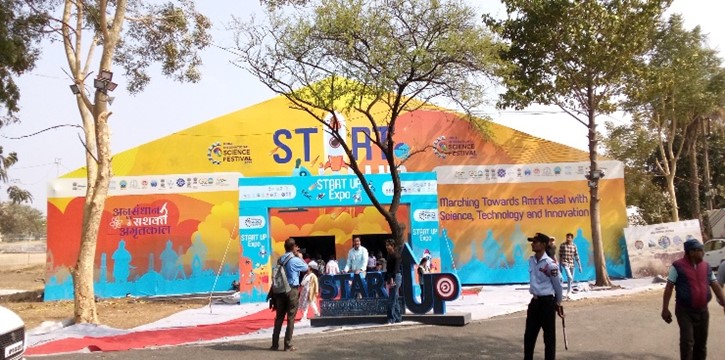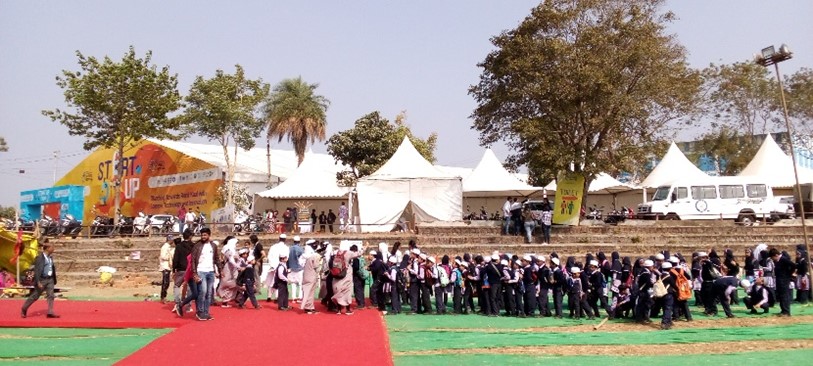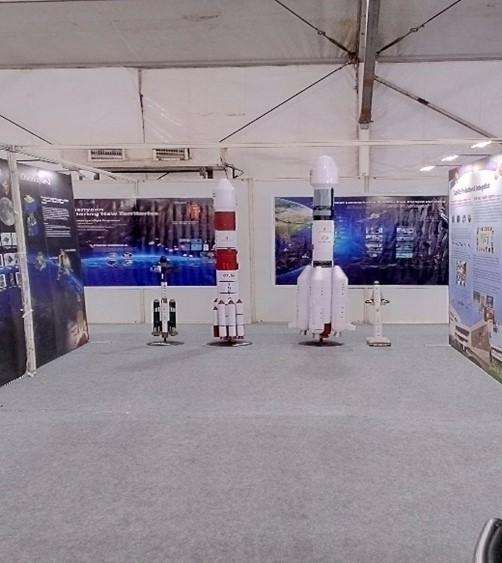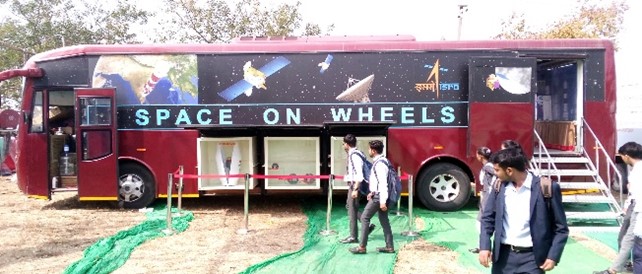Science, Exhibitions, and the Public: A Note on the India International Science Festival
Dipak Kr Chakraborty04/18/2023 | Reflections

Incubation and Start-up Expo tent of IISF [Image credit: Author]
Late January is quite pleasant in Bhopal, the capital city of the central Indian state of Madhya Pradesh. It is also the beginning of an academic year, which makes it an appropriate time for holding science exhibitions or festivals. The 8th edition of the India International Science Festival (IISF) (21-24 January, 2023) organized at the Maulana Azad National Institute of Technology (MANIT) campus, Bhopal, at the initiatives of the Ministries of Science and Technology, and Earth Sciences, Government of India, Vigyan Bharati, and the Madhya Pradesh Government was one such occasion. People from across India came to the IISF, enthusiastically enquired about different exhibits, and left after clicking pictures with friends and family often in front of those exhibits. To explain the implications of such public enthusiasm, we need to consider this issue both historically and sociologically.

Students from a 'madrasa' in front of a solar telescope [Image credit: Author]
Historical roots
Public enthusiasm for techno-scientific exhibitions is rooted in how they were first conceived. The tradition of scientific exhibitions can be traced back to the nineteenth century, essentially fostered by two factors. Firstly, the considerable growth of collecting natural objects, which problematized the issue of their proper ordering, and contributed to further disciplinisation of knowledge in natural sciences. Secondly, was the desire to educate the public through spectacular techno-scientific demonstrations magnified by the world exhibitions (e.g., Great Exhibition of London, 1851) that accompanied the industrial revolution. Here, the objective was also to elucidate how different application of machines had (supposedly) contributed to the human progress. For that purpose, efforts were made to keep these exhibitions accessible to everyone with guided tours, alongside making them more entertaining through recreational aspects to grab visitors’ attention (Schiele, 2008). Under colonial rule, such exhibition mode of disseminating scientific knowledge also entered India, albeit the purpose was different. The colonial officials through exhibiting improved agricultural instruments and small machinery, wanted to project cultural superiority over the 'hapless' Indians (e.g., Madras Exhibition, 1855). Against such initiatives stood the nationalist efforts of organizing fairs, especially since early twentieth century, to enlighten villagers about the utilities of modern technologies. People from remote areas often visited such fairs/exhibitions, marveled at the technological objects, yet seldom bought any such things due to unaffordability or apprehension (Plessis, 2008; Arnold, 2013). Today science exhibitions/festivals in India, thanks to its postcolonial developmentalist agenda, have moved far away from this stage and entered into an altogether glamorous level. However, in events like the IISF, public enthusiasm still bears the mark of nationalist imperative, accompanied by pedagogic agenda and recreational aspects of science exhibitions from the past. To illustrate this, let me narrate my experience at the IISF.

Models of ISRO’s four types of rocket/launch vehicles [Image credit: Author]
Microcosmic experience and its implications
I attended the IISF on 24 January 2023. The festival arena was divided into two distinct sections - ‘Incubation and Start-up Expo’ and ‘Mega Science Expo’. The former showcased technological innovations and start-up business opportunities using these innovations – crowded by college students. The latter was divided into two tents. The larger tent had stalls from across India’s techno-scientific spectrum like CSIR, ISRO and DRDO. I observed popular interactions especially with the representatives at the ISRO’s stall. ISRO is India’s government-controlled space research organization that enjoys budgetary privilege and close association with state-power. ISRO has contributed to the development of India’s satellite communication, launch vehicles (rockets) and outer space exploration capability. ISRO’s stall was colourfully decorated with posters regarding its past (Chandrayaan, Mangalyaan) and impending missions (Gaganyaan), the functioning and contributions of its Remote Sensing satellites, and enhancing socio-economic development through improved communications. The stall also showcased mini-replicas of ISRO-built launch vehicles/rockets, spacecrafts and images of various satellites.
The stall always had visitors: school students, young couples, small families, middle aged – people from various backgrounds. Whenever visitors asked questions, Ravidas*, a representative, calmly recited facts regarding satellites and rockets; their launching procedures and India’s achievements through ISRO. The lucid manner in which he described facts indicated the pedagogic agenda of the stall. This indeed was confirmed when I asked him who the target audience was. He replied that it was primarily students from engineering and basic sciences. When I asked Maya, another representative, what the students questioned them about, she answered that it was generally about the space program, exhibits and internship opportunities. I observed, due to the nature of mixed crowd, that no serious dialogue was possible between the representatives and the public (Srivastava, 2018). As soon as the former mentioned technical details, public nodded and began to move away. People on the other hand, were more interested in taking selfies with the rockets, or posing for pictures in front of the spacecraft models and satellite posters. Similar was the scenario inside ISRO’s bus exhibition (‘Space on Wheels’), essentially designed to spread knowledge about space technologies and India’s achievements in remote areas. Public attitude, therefore, reflected a sense of awe and admiration towards marvelous space technologies created by ISRO. That in turn boosted their nationalist imagination, spurring a sense of pride that their country has achieved despite many obstacles. This was unsurprising, given that the narrative they received from ISRO was characteristically its ‘success’ story. Taking pictures with the model rockets or satellites, thus, marked their desire to be part of that success story which would facilitate their own sense of socio-cultural morale and national status. On the other hand, public enthusiasm regarding space technologies also conveyed the recreational aspect of the IISF. People came with their peers, friends or family not simply to gain knowledge. They talked with each other, explained things, laughed, bought food and energetically pushed buttons on the glass boxes to see what it would do to the technological models inside. Far from being a serious educational excursion, the IISF represented a one-day outing where learning becomes fun.

‘Space on Wheels’ bus exhibition of ISRO [Image credit: Author]
From my experience in IISF, it seems that by attracting public enthusiasm through exhibitions, ISRO garners public affection, wonder and support for its work which provides certain legitimacy to its use of enormous public funds. As such exhibitions happen through government patronage, they may be dubbed as a ‘state-nation’ initiative to create a unifying and mighty national image of postcolonial India that supersedes its ethno-cultural and linguistic diversity. Moreover, it is important to note the tag ‘International’ in the title of the exhibition; that in many ways invites us to think about the aspiration of modern Indians to be international and global!
* All respondent names have been changed for privacy.
Dipak Kr Chakraborty is a PhD candidate in STS/History of Science at the Department of Humanities and Social Sciences, IISER Bhopal, India. His research is on the social history of India’s space programme in relation to society, internal politics and public culture.
Published: 04/18/2023
